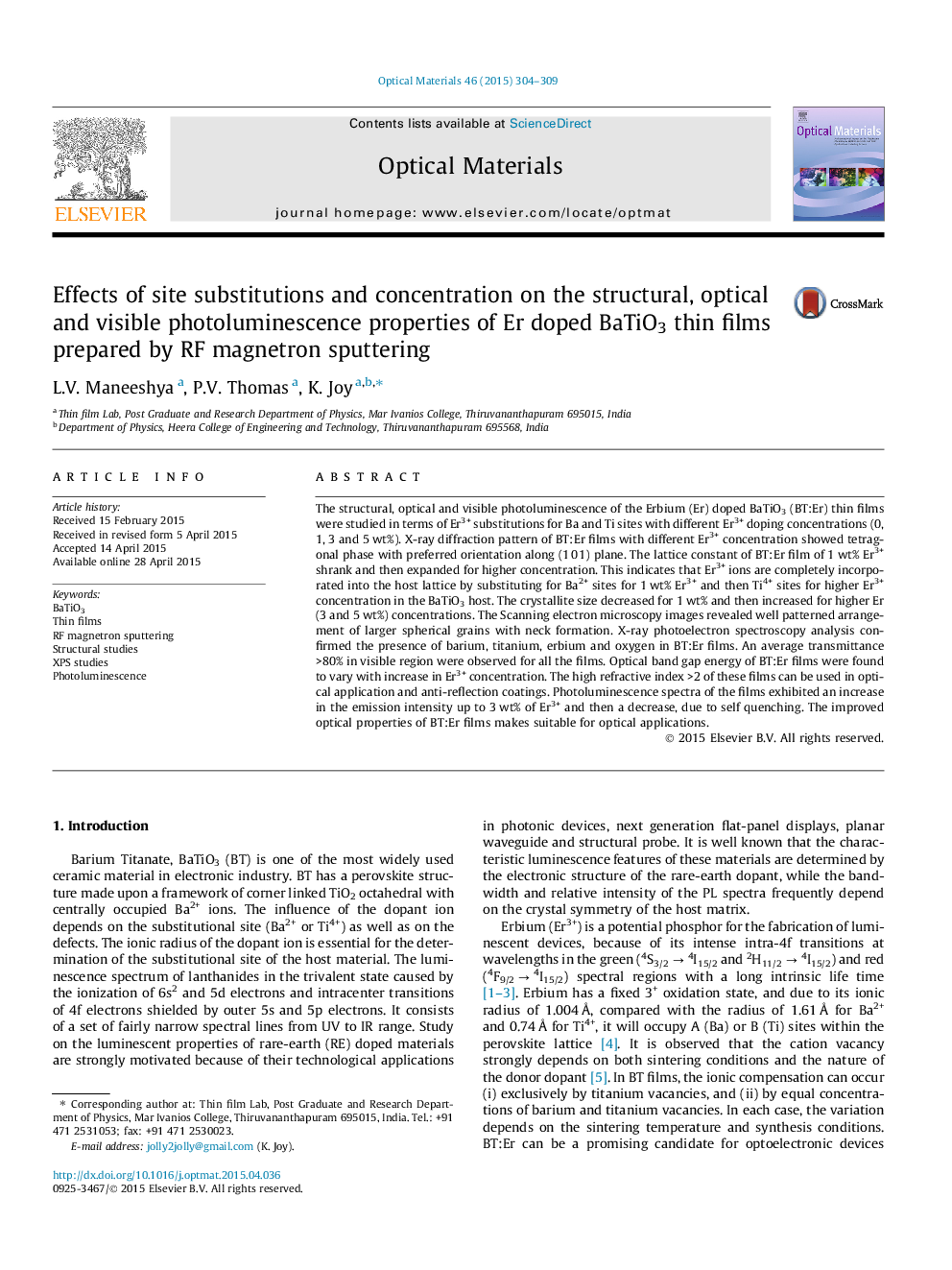| Article ID | Journal | Published Year | Pages | File Type |
|---|---|---|---|---|
| 7909221 | Optical Materials | 2015 | 6 Pages |
Abstract
The structural, optical and visible photoluminescence of the Erbium (Er) doped BaTiO3 (BT:Er) thin films were studied in terms of Er3+ substitutions for Ba and Ti sites with different Er3+ doping concentrations (0, 1, 3 and 5Â wt%). X-ray diffraction pattern of BT:Er films with different Er3+ concentration showed tetragonal phase with preferred orientation along (1Â 0Â 1) plane. The lattice constant of BT:Er film of 1Â wt% Er3+ shrank and then expanded for higher concentration. This indicates that Er3+ ions are completely incorporated into the host lattice by substituting for Ba2+ sites for 1Â wt% Er3+ and then Ti4+ sites for higher Er3+ concentration in the BaTiO3 host. The crystallite size decreased for 1Â wt% and then increased for higher Er (3 and 5Â wt%) concentrations. The Scanning electron microscopy images revealed well patterned arrangement of larger spherical grains with neck formation. X-ray photoelectron spectroscopy analysis confirmed the presence of barium, titanium, erbium and oxygen in BT:Er films. An average transmittance >80% in visible region were observed for all the films. Optical band gap energy of BT:Er films were found to vary with increase in Er3+ concentration. The high refractive index >2 of these films can be used in optical application and anti-reflection coatings. Photoluminescence spectra of the films exhibited an increase in the emission intensity up to 3Â wt% of Er3+ and then a decrease, due to self quenching. The improved optical properties of BT:Er films makes suitable for optical applications.
Related Topics
Physical Sciences and Engineering
Materials Science
Ceramics and Composites
Authors
L.V. Maneeshya, P.V. Thomas, K. Joy,
